A Time to Dream: Black Women’s Exodus from White Feminist Spaces
Scholarship in rhetoric and composition explores intersections between race and gender, especially within writing program administration (Craig and Perryman-Clark “Troubling the Boundaries; Craig and Perryman-Clark “Boundaries Revisited). While exploring intersections between race and gender, particularly in conjunction with BIPOC experiences, the focus often shifts to microaggressive experiences, pain, and hopeful processes for healing (Carey “A Tightrope of Perfection”; Carey “Necessary Adjustments”; Diab et al.). Given the discourses surrounding black pain and healing, our work seeks to shift the focus away from Black pain and toward dreaming.
Why dreaming? We dream of creating in our new space what Adrienne Maree Brown refers to as “feminine leadership,” a kind of leadership “not just [for] women leaders, but [for] leaders who shift our understanding of how power can be held” (Brown 66). As women who have suffered from and been impacted by our white colleagues’ indifference, devaluing, and discounting, we ought to be at the table where important decisions about dealing with institutionalized racism, microaggressions, and diversity, equity, and inclusion are being made. In addition, events surrounding the police murder of George Floyd during the summer of 2020 prompted the general public to revisit #blacklivesmatter. While proponents of #blacklivesmatter, much of the discourse has focused mainly on BIPOC survival, a discourse that has also prompted a more thorough discussion of BIPOC experiences in the academy (Richardson and Ragland). For example, in response to George Floyd’s murder, both the Chronicle of Higher Education and Inside Higher Ed published a wide range of articles and analyses of BIPOC experiences in higher education and the ways in which organizations inflict life-impacting damage, especially on Black faculty and staff (Ellis; Sangaramoorthy & Richardson; Flaherty). For us, as contributors to this special issue, however, survival is inefficient: Survival is simply a minimum requirement; BIPOC must have opportunities to thrive in the academy, a point that Bettina Love argues in her book, We Want to Do More Than Survive: Abolitionist Teaching and the Pursuit of Educational Freedom. Specifically, Love shares her story as an educator of the connections between her students’ struggle to survive in a classist and racist world, a struggle that parallels her own struggle to survive as a teacher (21).
Given our focus on thriving in the academy, we seek to share a collective narrative of how three Black women at a large Midwestern PWI left a racist and microaggressive gender and women’s studies department and moved to an institute that houses African American and African studies. While the new unit employed full-time and part-time faculty, none of them were tenure-track; therefore, we were afforded the opportunity to serve as the unit’s first tenure-track faculty. Clearly, the misogynoir reflects a brutal irony that GWS departments expect Black women to further all women‘s interests while impeding our own ability to thrive. The move demands that institutions bear responsibility in providing Black women with an environment to thrive and dream of new possibilities and opportunities to develop curricula and initiatives that center Black lives with priority. In doing so, we move away from displaying Black pain for public curiosity and engagement, toward dreaming of new possibilities for Black women’s seats at the table, including opportunities to create, innovate and lead at PWIs.
“Rhetorical Healing”: Our Exodus from Toxic Space
We open this section with some context and storytelling to situate our exodus and the pain experienced before the dream. Tamika L. Carey contends that writing “can become an instrument for healing . . . or a means for Black women to enact their agency in resisting or repairing the conditions that wound them” (27). April Baker Bell extends this concept of healing by describing the relationship between rhetorical healing, storytelling and navigating the tenure track, noting: “When it comes to service-related concerns, Black women faculty pay a higher race tax because they perform a disproportionate share of service and are expected to mentor Black students and other students of color because of their race and gender” (52). For years, we had been paying this tax, oftentimes to the detriment of our physical and mental well beings. Each of us were required to take medical leaves of absence to deal with the trauma, caused by our department and institution, and pursue healing.
So, here is our story: It was the early summer of 2020; our institution had just announced that each vice-presidential unit would enact 20 percent cuts to their operating budgets as a result of the COVID-19 pandemic. We were informed that most non-tenure track terminal appointments would not be renewed, that the part-time instructor budget was wiped clean, and that many staff positions were being eliminated. Many campus leaders, including our own dean, participated in a series of town halls to provide transparency concerning the budget. At the same time, the Department of Gender and Women’s Studies (GWS), where we were all faculty members, awaited news concerning the unit’s spring internal search for a department chair, a search very much entangled with years of nepotism, power grabbing, toxicity, and white supremacy.
Meanwhile, the world witnessed the horrific murder of George Floyd by a police officer. As Black women in an already hostile environment, we lamented the constant murders and abuses of Black people by police, wondering to what degree our institutions believed that our Black lives really did matter. Instead of joining our discussions focused on how to support Black faculty and students, GWS turned its focus more on arguing with the dean and provost about why the existence of a GWS department and chair were necessary, often times co-opting the struggle for racial equity and social justice under the rubric of work that such a department, they claimed, would do. In fact, to justify its existence as a department, several GWS faculty wrote emails directly to campus leaders about how the department was a place that advocated for race, gender and social justice, when our experiences clearly demonstrated it did not. But, these emails sure sounded like faculty were strong allies and advocates, when in fact, countless times they showed up as bullies, agitators, and made it known explicitly that they did not care about our well-being at all. In other instances, a prior chair increased our teaching loads the following semester of our medical leaves in order to ”make up“ the work we would have been assigned while on leave. It took moments like these, full of microaggressions, direct professional sabotage, and silencing, for us to truly realize that our lives did not matter and that we needed an exodus.
But that exodus didn’t happen overnight; it would take a formal complaint to the institutional equity office, plus a pleading with our dean and provost, to intervene before we could leave. That leave didn’t formally happen until October 2020. This of course happened after we experienced the last four years of abysmal shared governance, collegiality, as well as indigitations based power tactics, and complete devaluing of faculty women of color in our department. Two of us had a full appointment in GWS (while one of us was jointly appointed). Two of us with full-time GWS appointments were the ones who started not only the official complaint against the anti-Blackness practices of our White colleagues, by sending a 170 pages-long complaint to the Office of Institutional Equity and the Provost, but we also initiated the process of leaving the toxic and anti-Blackness space that GWS has become. After years of suffering, the third one of us, who was ranked as a full professor, advocated for removal from GWS. Prior to leaving, our white colleague did not have any qualms co-opting our pain to advance their own agenda of making sure that one of them got appointed as department chair of GWS. They were more concerned about fabricating a narrative about a GWS department in peril and thus using anti-Blackness rhetoric to support that false narrative, completely dismissing our multiple attempts to bring to their attention the ways in which their actions were hurting us and adding more to our pain. Our dean and provost formally acknowledged that the trauma inflicted by the mostly-white GWS department indeed was a white supremacist one from which we needed to leave.
The lack of available advocacy and sponsorship contributed significantly to the long duration of white supremacist practices in the GWS department. Absent of white women allies and sponsors, few were available to speak up on behalf of Black women who endured these traumatic experiences in the department. Within the department, one of us was pre-tenure, two of us were tenured, one of whom recently was promoted to full professor; thus, we were not in the best position to oppose and fight white women who were full professors in the department. According to a fall 2019 US Department of Education Integrated Postsecondary Education Data System (Ipeds) published in a Chronicle of Higher Education article, “There were 251,921 tenured associate and full professors. Of those, 5,221, or 2.1 percent, were Black women.” At Western Michigan University, where we teach, there currently are 566 Tenured Professors. Of those, only 12, or 2.1% were Black women (“How Many Black Women”). So, in addition to not having available allies and sponsors within the department, there were few Black women with the ranks of tenure and/or full professor whom we could consult to speak and advocate on our behalf, with one of us risking approaching our dean and provost to initiate our exodus after previous attempts and requests for two of us to be removed from the unit.
Concurrent with the processes formally leading to our exodus from GWS, our institution’s president sent out a campus-wide communication that the institution would embark on a Campus Climate survey to study the impacts of diversity and inclusion on our campus (“Update”). By the end of that academic year, the university issued a report of its findings. The findings revealed that while 50% of respondents believe “diversity and inclusion are core values” (“Update”), the following key statistics from the survey indicate the lack of consequences concerning harassment and bullying by employees and faculty with respect to diversity and inclusion policies:
Almost one in two employees at WMU (47%) have experiences [sic] or witnessed bullying. Over one-third of employee’s report experiencing or witnessing discrimination, bias, and/or harassment based on gender (39%) and/or race/ethnicity (35%)…. When asked to identify who initiated the offence over 50% of employees said faculty (54%), 50% said staff, 39% said students, 36% said other administrators, and 20% said senior administrator (vice president or dean)…
Many employees (66%) did not report the incident(s). Top reasons the incidents were not submitted by employees included the employee not believing anything would happen (53%), a fear of retaliation (43%), feeling there was not enough evidence (33%), not believing WMU would support the employee (28%), not knowing who to report to (26%), fear of job loss (24%), decided it was not important enough (23%), or the employee had no witness for support (21%). For those who did report, the majority (64%) reported the incident(s) to their supervisor, followed by the Office of Institutional Equity (38%), a senior administrator (27%), Human Resources (27%), and a faculty member (19%). (McCorkle and Hesier 16)
In short, a lot of our own experiences mirrored others’ perceptions as noted in the climate study. The lack of accountability and hesitance to report the bullying and harassing of BIPOC women is endemic to the ways in which the institution has handled those with similar experiences. It seems that the university has created an advisory task force (The Racial Justice Advisory Taskforce) and received grants to develop a Truth Racial Healing Campus; while these are in the nascent stages of development, we look forward to seeing the novel ways in which the institution strategically connects healing with restorative justice.
A Dream and Promise for Something New
In some ways, the move is a temporary fix and a rhetorical exercise that does not eliminate the systemic problems of the institution. Put simply, while we appreciate leaving and starting with a new unit, we were often left questioning why we were the ones who had to leave the department while those perpetuating personal and professional harm continued to remain within the department. The move out of a symbolically violent department allowed for entrance into a new space that can become a protected space where we have room to dream, for dreaming is not only essential to survival, but also essential to building successful careers and futures. Specifically, this dream was pitched as a promise to new beginnings, a promise to create and develop African-centered and Black feminist curricula and programs with new colleagues who shared many of our scholarly and teaching principles and interests. The new space became one of very few on campus to have three tenure-track Black women faculty in the same department. After our arrival, a fourth African American female faculty member was approved for membership as a joint-appointee. While we appreciated the opportunity to create and innovate with new colleagues, the jury is still out as to what extent the institution will hold good to its promises and to what extent systemic forms of hostility and bullying (specifically toward tenure-track Black women who are grossly underrepresented) will continue to be tolerated. In effect, we ask: “Was this move restorative and just? How do we maintain and keep the new space ‘safe’? What obstacles await as new personnel apply to enter the safe space we designed and created?”
In the aftermath of 2020, the University also began to roll out our institution’s initiatives and promises to address, in new ways, the issues of diversity and inclusion. While diversity and inclusion theatrical discussions abound, especially at the cost of people of color’s participation, our institution has moved forward with promising initiatives. One of us (Staci) was offered the opportunity to serve as the new director/chair of the new unit after we arrived by our dean. She was also offered the opportunity to develop and facilitate a new institutional program called the “Dream Fellowship Program: A Coalition for Aspiring Leaders,” a program that is sponsored by the Office of the Provost, The Office of Diversity and Inclusion, and the Office of Institutional Equity. The program seeks to create a new pipeline of institutional leadership; moreover, in order to be selected as a fellow, one must commit to shadowing a current leader who occupies their dream academic leadership position, in addition to completing an approved diversity, equity and inclusion project. In essence, the program seeks to “transform the representation of new and aspiring leaders on WMU’s campus” (“Dream Fellowship Program”). The first cohort of selected fellows are all women, with three of the four being Black women. The other two of us (Mariam and Jennifer) were now poised to work on developing a new Africana performance major with collaborators from fine arts. Both are also developing new courses that allow for intersectionality between race and gender. One of us was afforded the opportunity to develop a dream course on gender and environmental justice, while the other of us teaches a popular course on race and identity in the media. While both courses acknowledge a gender studies lens, they enable us to bring the Africana diaspora lens to this work.
After the formation of these initiatives, the campus community received notice of the largest gift given to a public university in the United States. The Empowering Futures Gift specifically designates $300 million to WMU Medical School, $200 million to WMU Academic Affairs, and $50 million to athletics. These funds are designed to address historical inequities. Specifically, a portion of these funds have been allocated to targeting faculty diversity and inclusion hires with intent to transform the demographics of faculty ranks and research (“WMU Foundation”). While each of these new programs and initiatives are exciting–clearly $200 million dedicated to academic affairs is certainly a dream–we do seek to hold institutional leadership accountable for the opportunities promised to insure that they come to fruition.
From Opportunity to Accountability: Dreaming the Dream and Walking the Walk
Dreaming and offering new opportunities cannot be done in place of accountability. Indeed, there is a responsibility to retain Black faculty. Black women and staff are asked to sacrifice so much. We work so hard and tirelessly for the love of our work and commitment to the institution. Yet, when the time comes to reward us, we often get passed over for other people who have not worked as hard, and are often the last ones to get promoted. At the moment of our collaboration on this article, Jennifer is in the sixth year of her tenure-track appointment and has yet to apply for tenure and promotion due to the lack of support and barrage of hostility and character attacks by tenured faculty in GWS. After many years as an associate professor, Mariam has now begun to pursue promotion to full professor, acknowledging that the GWS toxicity impeded her progress toward promotion previously. Staci’s creation of the Dream Fellowship Program seeks to ensure that a pipeline is created to ensure that those of us pursuing tenure and promotion are not overlooked for future leadership and promotion opportunities due to lack of experience or narrow networks. As we’ve each experienced the similar frustration of feeling devalued, and unappreciated, coupled with acts of racism, it is clear that often Black faculty are systemically pushed away from these academic spaces.
Accountability is also needed in addressing the lack of diversity, inclusion and equity in hiring, compensation and retention of faculty, students and staff of color. While the Empowering Futures Gift seems to address this lack of diversity, the devil is in the details. In other words, void of a specific plan and process for recruiting and retaining faculty and staff, throwing money at the issue does not guarantee that it will be addressed. When we speak of the diversity work that often gets tagged as service, accountability is needed for the “invisible labor” and “cultural taxation” that Black faculty continue to perform for which they receive no recognition (Baker-Bell 52). To what extent do leadership opportunities become based on this invisible labor? To what extent does this labor become credited in tenure and promotion decisions? A framework of accountability is crucial in making sure the aforementioned structures that allow the perpetuation of harm to continue are fundamentally changed.
Finally, those who harass and inflict abuse need to be held accountable for their behaviors. Such accountability requires a detailed review of institutional policies and processes for investigation and disciplinary action. How do we make sure that the structures that are in place and that allow harm to happen are changed from the root? How are people in administration complicit in allowing disruptive and racist people to continue to cause harm? The inaction by the institution and administration, despite the fact that they were informed about years of such a harm causing work environment, is unacceptable. While we appreciate the new space to dream, such space came at a price. For one of us (Mariam), we landed in the home and discipline of our PhD. For Staci, dreaming meant that she also needed to work outside of her primary area of training (rhetoric and composition), though she was able to develop curricular content more closely related to her areas of expertise on African American students and language, areas she never taught when working exclusively in the English Department. For Jennifer, however, she was required to shift her primary areas of teaching (feminist studies) to accommodate the needs of her new unit, thus having to study and prep to teach new courses in a different field. Each of us find ourselves now able to dream but with different trajectories that have impacted our careers.
In sum, simply stopping the suffering on an individual level is not good enough. We would all just like to work in an environment free of unnecessary drama, stress, and toxicity, so that we could devote our time and energy to doing what we love to do. We would like to teach, and be role models to our students. We would like to do research that is valued and that positively impacts peoples’ lived experiences. We would like to share our experiences in academia so that other colleagues and women of color could learn from them. We dream of a workplace where we are valued and appreciated as human beings. We dream of a work place free of White supremacist hierarchy and power struggles. The institution has to set processes in place to prevent a pernicious and dysfunctional working environment. No one should have to be the target of harm, especially racialized harm. For true healing and dreaming to take place, institutions must move beyond quick fixes and throwing money at the problem. They must go to the root to solve institutional inequities and create real, meaningful transformative change.
Works Cited
Baker-Bell, April. “For Loretta: A Black Woman Literacy Scholar’s Journey to Prioritizing Self-Preservation and Black Feminist–Womanist Storytelling.” Journal of Literacy Research, vol. 49, no. 4, 2017, pp. 526–543., doi:10.1177/1086296×17733092.
Brown, Adrienne Maree. Emergent Strategies: Shaping Change, Changing Worlds. Chicago: AK Press, 2017.
Carey, Tamika L. Rhetorical Healing: The Reeducation of Contemporary Black Womanhood. State Univ of New York Press, 2017. Carey, Tamika L.
—. “A Tightrope of Perfection: The Rhetoric and Risk of Black Women’s Intellectualism on Display in Television and Social Media.” Rhetoric Society Quarterly, vol. 48, no. 2, 2017, pp. 139–160., doi:10.1080/02773945.2017.1392037.
—. “Necessary Adjustments: Black Women’s Rhetorical Impatience.” Rhetoric Review, vol. 39, no. 3, 2020, pp. 269–286., doi:10.1080/07350198.2020.1764745.
Craig, Collin Lamont and Staci M. Perryman-Clark “Troubling the Boundaries Revisited: The More Things Change the More They Still the Same.” WPA: Writing Program Administration, vol. 39, no. 2, 2016, pp. 20-26.
—. “Troubling the Boundaries: (De)Constructing WPA Identities at the Intersections of Race and Gender.” WPA: Writing Program Administration, vol. 34, no. 2, 2011, pp. 37-58.
Diab, Rasha, et al. “Rhetorical and Pedagogical Interventions for Countering Microaggressions.” Pedagogy, vol. 19, no. 3, 2019, pp. 455–481., doi:10.1215/15314200-7615417.
Ellis, Lindsay. “For Colleges, Protests Over Racism May Put Everything On the Line.” The Chronicle of Higher Education, The Chronicle of Higher Education, 23 July 2020, www.chronicle.com/article/for-colleges-protests-over-racism-may-put-everything-on-the-line.
Flaherty, Colleen. Scholars Talk about Being Black on Campus in 2020, www.insidehighered.com/news/2020/10/21/scholars-talk-about-being-black-campus-2020.
June, Audrey Williams, and Brian O’Leary. “How Many Black Women Have Tenure on Your Campus? Search Here.” The Chronicle of Higher Education, The Chronicle of Higher Education, 28 May 2021, www.chronicle.com/article/how-many-black-women-have-tenure-on-your-campus-search-here.
Love, Bettina. We Want to Do More than Survive: Abolitionist Teaching and the Pursuit of Educational Freedom. Beacon, 2020.
McCorkle, Candy, and Heiser Ciji. 2021, pp. 1–18, Office of Diversity and Inclusion: 2020 Campus Climate Study Report.
Richardson, Elaine, and Alice Ragland. “#StayWoke: The Language and Literacies of the #BlackLivesMatter Movement.” Community Literacy Journal, vol. 12, no. 2, 2018, pp. 27–56., doi:10.1353/clj.2018.0003.
Sangaramoorthy, Thurka, and Joseph B. Richardson. “Inside Higher Ed.” Many People Deny How Pervasive Racism Is in Higher Ed and How It’s Often Reproduced through Small, Routine Acts of Harm (Opinion), www.insidehighered.com/advice/2020/10/16/many-people-deny-how-pervasive-racism-higher-ed-and-how-its-often-reproduced.
“The Dream Fellowship Program.” Western Michigan University, 23 Mar. 2021, wmich.edu/facultydevelopment/programs/dream.
“Update: Campus Climate Survey Results and RJAC Progress.” Western Michigan University, 27 May 2021, wmich.edu/president/campus-climate-rjac-update.
“WMU Foundation Receives Historic Gift in Excess of a Half-Billion Dollars, the Largest Ever for a Public Higher Ed Institution.” Western Michigan University, 8 July 2021, https://wmich.edu/news/2021/06/6441.
COVER IMAGE CREDIT: Three strong African women stand together. Concept of fighting for equality and female empowerment movement. Vector horizontal banner. By Mary Long.
KEYWORDS: gender and women’s studies; BIPOC faculty; dream; administration


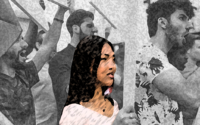
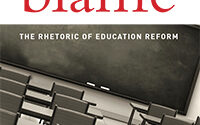
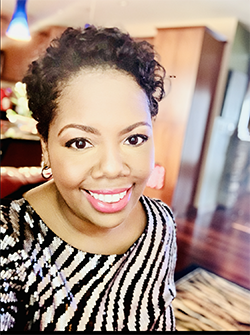 Dr. Staci M. Perryman-Clark serves as the Director of the Institute for Intercultural and Anthropological Studies at Western Michigan University, housed within the College of Arts and Sciences. She is also professor of English and African American Studies at Western Michigan University. Perryman-Clark currently serves as the Assistant Chair of the Conference On College Composition and Communication. She is a previous recipient of the 2008 CCCC Scholars from the Dream Award and Council of Writing Program Administrators Best Book Award.
Dr. Staci M. Perryman-Clark serves as the Director of the Institute for Intercultural and Anthropological Studies at Western Michigan University, housed within the College of Arts and Sciences. She is also professor of English and African American Studies at Western Michigan University. Perryman-Clark currently serves as the Assistant Chair of the Conference On College Composition and Communication. She is a previous recipient of the 2008 CCCC Scholars from the Dream Award and Council of Writing Program Administrators Best Book Award.
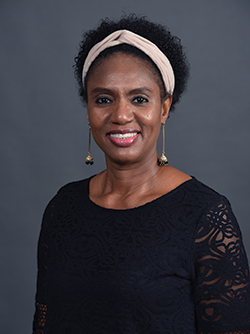 Dr. Mariam Konaté is an Associate Professor of African American and African Studies and Gender and Women’s Studies. Her research interests include the experiences of Continental African immigrants in the USA, the relevance of father absence to African-American women’s heterosexual dating experiences, skin bleaching among African women, comparative literature and cultural studies, African epics, and Post-Colonial Studies.
Dr. Mariam Konaté is an Associate Professor of African American and African Studies and Gender and Women’s Studies. Her research interests include the experiences of Continental African immigrants in the USA, the relevance of father absence to African-American women’s heterosexual dating experiences, skin bleaching among African women, comparative literature and cultural studies, African epics, and Post-Colonial Studies. 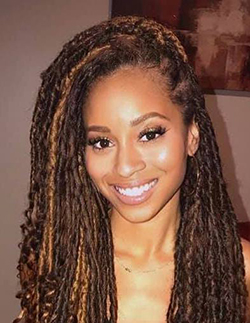 Dr. Jennifer Richardson is Assistant Professor of African American and African Studies and Gender and Women’s Studies at Western Michigan University. As a Black feminist and sociologist, her scholarship investigates intergenerational healing circles, in the tradition of African ring shouts, as methodological and pedagogical approaches. Dr. Richardson's work focuses on bringing attention to Africana women and collective healing as a socio-political path to the recovery of self; and the multidimensional ways Africana women negotiate the intersections of popular media, dominant discourses of beauty, and constructions of identity.
Dr. Jennifer Richardson is Assistant Professor of African American and African Studies and Gender and Women’s Studies at Western Michigan University. As a Black feminist and sociologist, her scholarship investigates intergenerational healing circles, in the tradition of African ring shouts, as methodological and pedagogical approaches. Dr. Richardson's work focuses on bringing attention to Africana women and collective healing as a socio-political path to the recovery of self; and the multidimensional ways Africana women negotiate the intersections of popular media, dominant discourses of beauty, and constructions of identity.